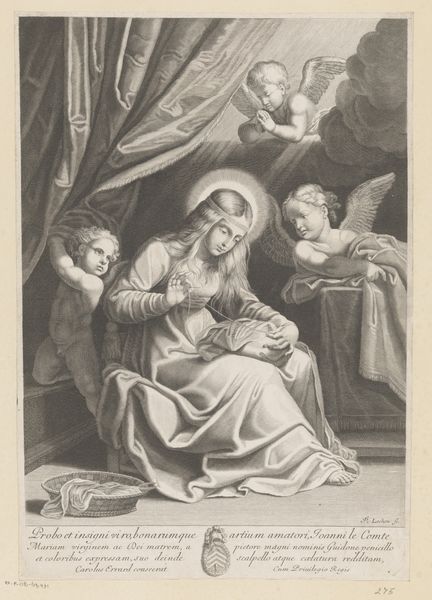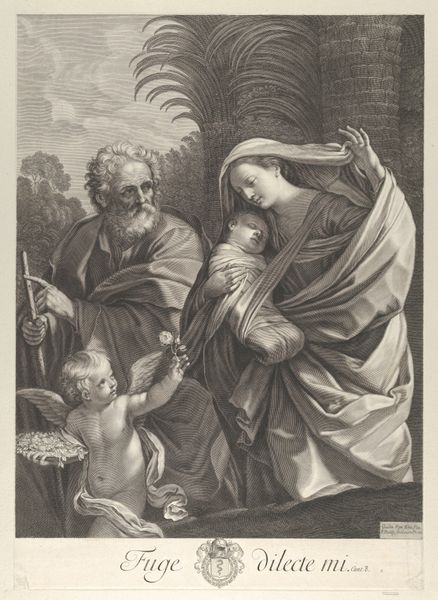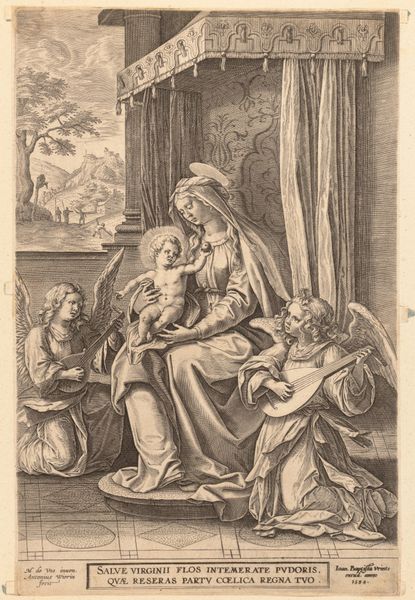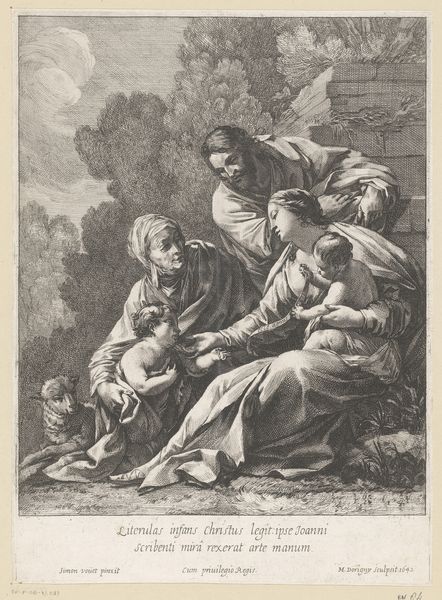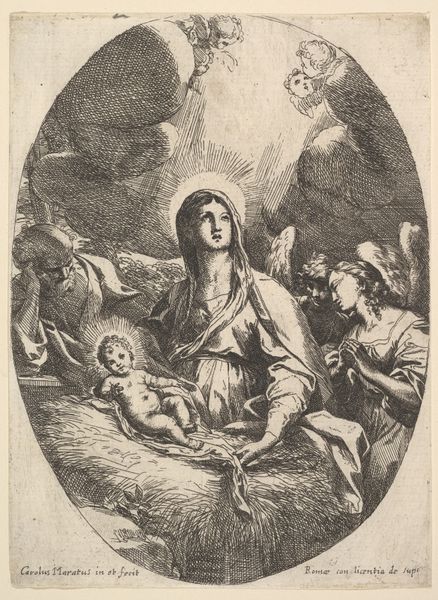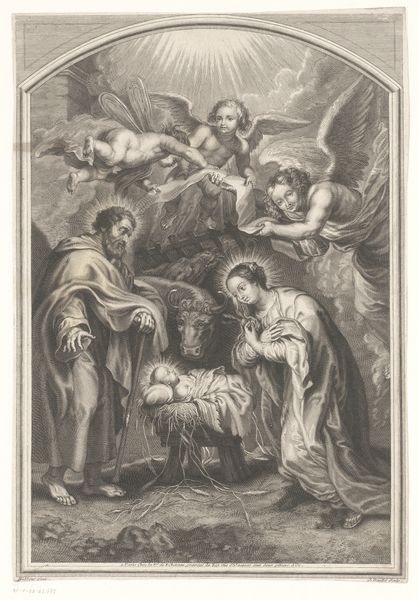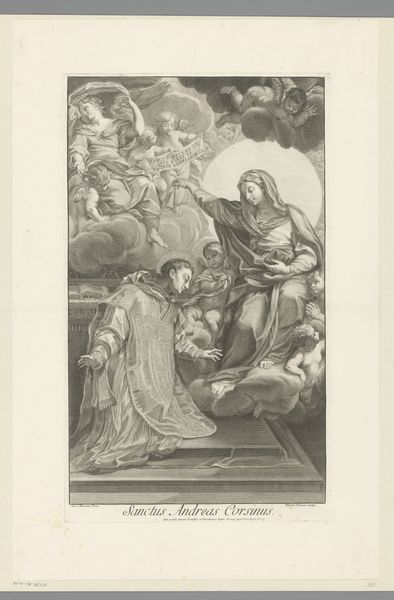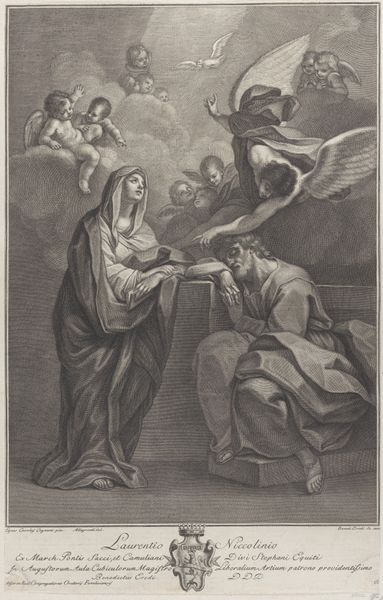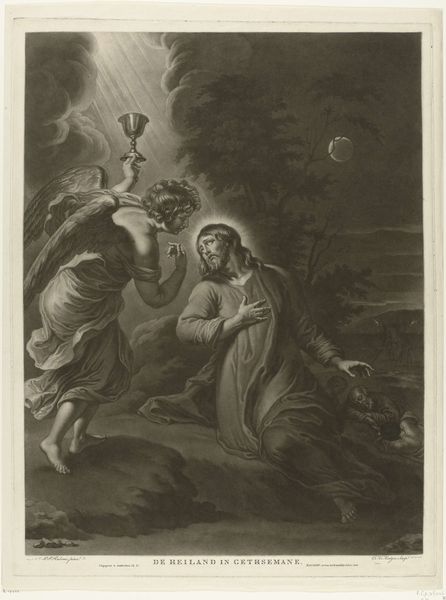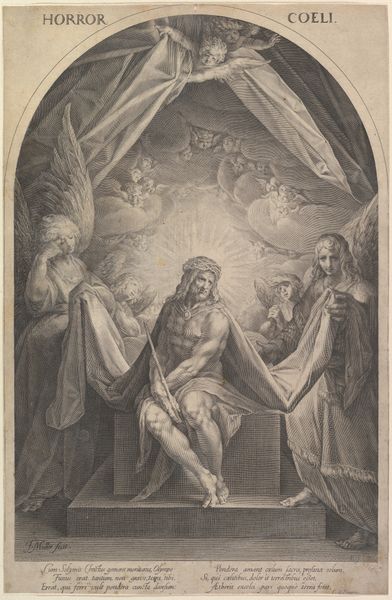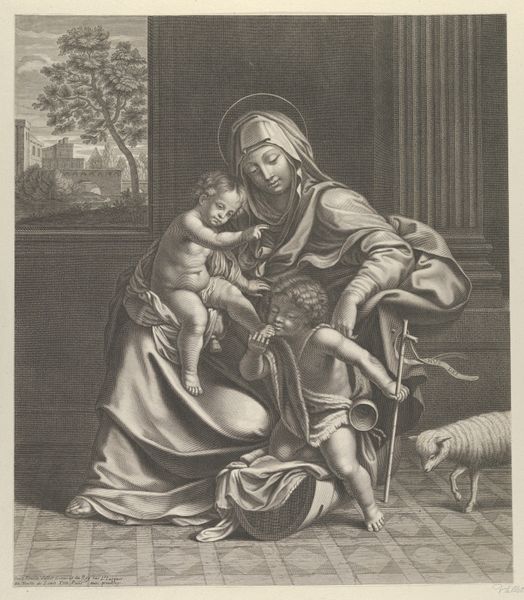
drawing, print, engraving
#
portrait
#
drawing
#
baroque
# print
#
figuration
#
history-painting
#
engraving
#
virgin-mary
#
christ
Dimensions: Sheet: 14 5/8 × 12 15/16 in. (37.2 × 32.8 cm)
Copyright: Public Domain
Curator: Welcome. We are standing before "The Holy Family," an engraving by Grégoire Huret, created sometime between 1620 and 1670. What are your initial thoughts? Editor: My first impression is one of controlled drama. Despite the seemingly conventional subject, there’s a tension created by the contrast between the radiant light and the heavily shaded figures. It feels weighty, even oppressive. Curator: The baroque style is quite evident here. Look at the intricate lines, the density of detail, and the dynamic composition. Huret masterfully employs chiaroscuro to heighten the emotional impact and sculpt the figures within the space. Notice the way light cascades down, unifying the group while also creating distinct focal points. Editor: The positioning of Mary, Joseph, and the Christ child as the Holy Family, feels rooted in patriarchy and what the ideal image should be. A perfect nuclear family rooted in catholic belief. The artist portrays Mary in such a divine light compared to that of Joseph; further supporting patriarchal rule and beliefs. I wonder about Huret's context, and what political motivations that were behind the construction of this piece. Curator: Undoubtedly, social and religious ideologies permeate the work. However, one must also consider the engraving's technical aspects. Huret's skill in manipulating line and tone to replicate the texture of fabric, skin, and even light itself is remarkable. Focus on the way he suggests depth through subtle variations in line thickness and density. It creates a rich and captivating surface. Editor: And within those aesthetic choices, we find embedded values. The material richness you highlight isn't neutral. It signifies wealth and power, reinforcing the Church's authority and projecting a particular image of sanctity. It reminds the contemporary viewer about class issues and wealth and how these were depicted during these periods in history. Curator: Certainly, a complex interplay of visual and cultural elements. Examining how Huret utilizes linear perspective to construct a believable space that envelops the figures is fascinating. The interplay between surface and depth gives the engraving a sense of realism and grandeur. Editor: For me, it's that negotiation—between artistic skill, theological doctrine, and socioeconomic status—that makes this a truly compelling piece. We aren’t just looking at an image of devotion, but at a reflection of the society and classism that shaped its creation. Curator: Indeed. Considering those intersections allows for a richer understanding of the artwork's place in history, moving beyond mere representation towards critical engagement. Editor: Absolutely, and by analyzing all facets, we recognize "The Holy Family's" relevance as a historical and cultural object of great value.
Comments
No comments
Be the first to comment and join the conversation on the ultimate creative platform.
